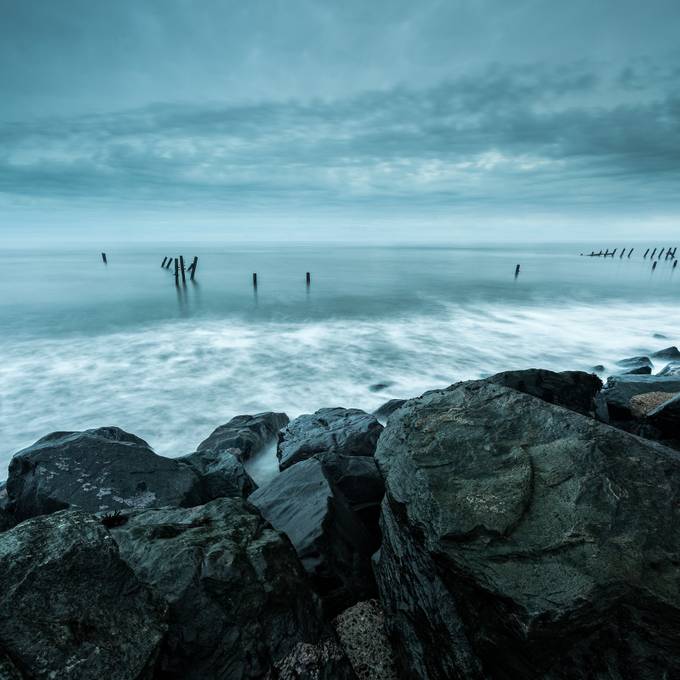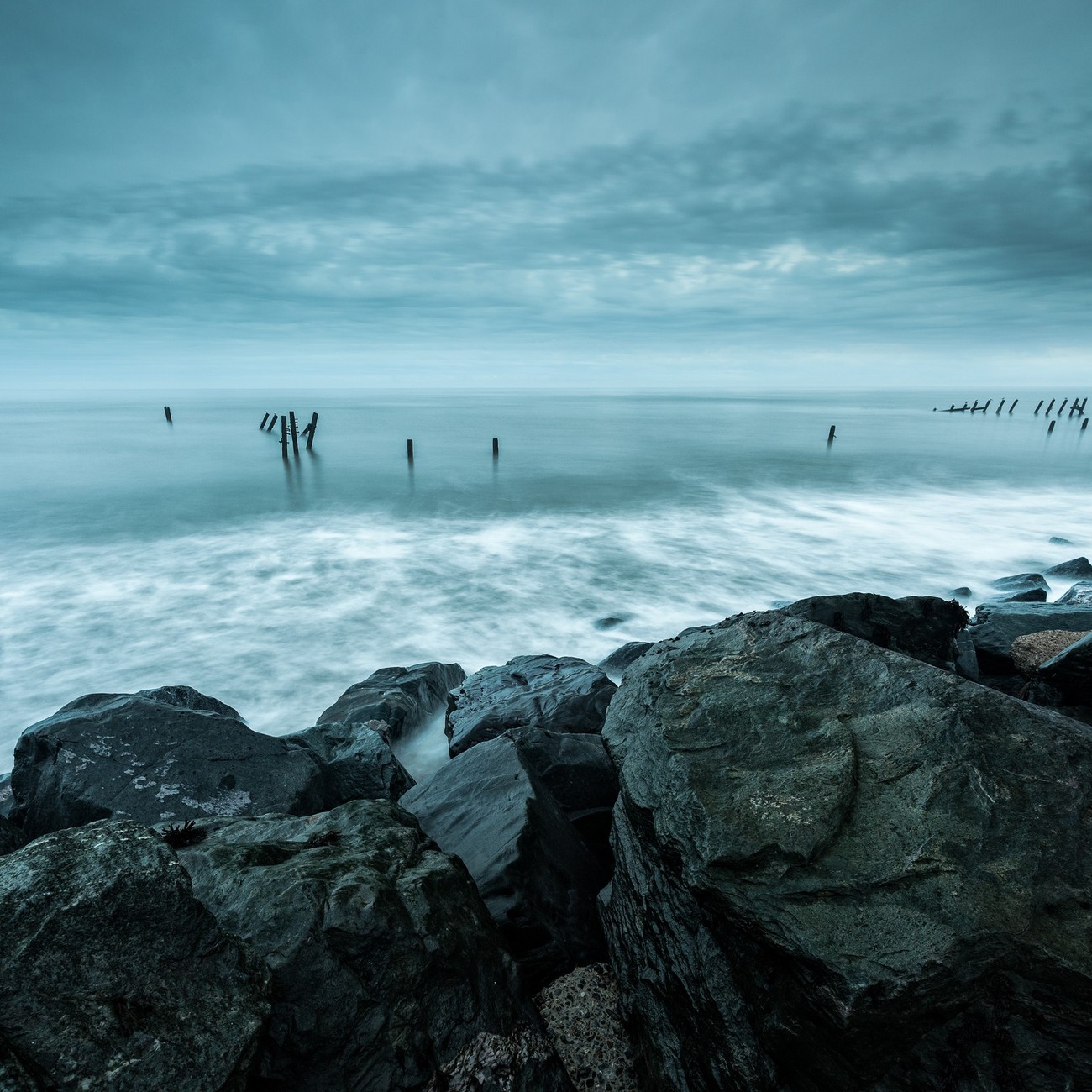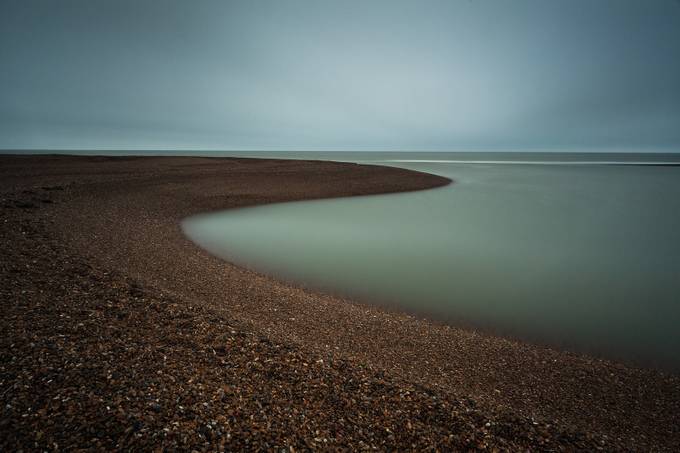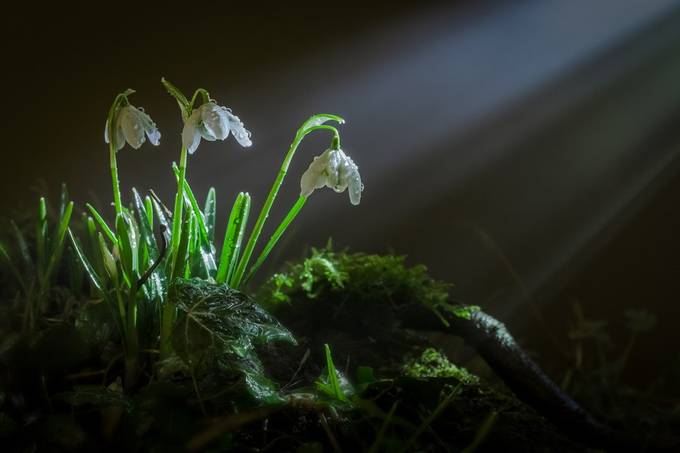Here is something we can learn from Jellyfire about the techniques and story behind this awarded photo.
Jellyfire is keen amateur, with a passion for landscapes, though he like to try his hand at lots of other styles.
Where did you take this photo?
This shot was taken at one of my favourite location, Happisburgh on the north Norfolk coast in England. The coastline here is eroding quickly so it seems to have changed with every visit, and there are the remains of lots of failed coastal defendes
What time of day?
The shot was taken just before dawn, which is my favourite time of day for shooting, I have to drive for about an hour and a half to reach this location, so in summer this usually means setting the alarm for some ridiculous hour. At this time of year the sunrise here is around 7.30am so its a bit more civilised!
Anything worth sharing about lighting?
I love the blue tones you get in just before sunrise, and you are less reliant on a spectacular sky. Overcast days like this lend themselves really well to seascapes, and I like the way the sea and sky almost merge into one
What equipment did you use?
My usual kit consists of a Canon 5Dmkii, and another one which I had converted for shooting infrared. I use a Zeiss 18mm Distagon for wide shots like this one, and have a Canon 100mm f/2.8L for longer shots. I usually leave the 400mm in the car to save my back from too much upset. I user a sturdy Velbon tripod, which is essential for windy coastal weather and shooting in low light. I used a Lee .9ND hard graduated filter to balance the exposure in the sky, and a Lee circular polariser to control the reflections
What inspired you to take this photo?
I really like the old wooden sea defences which are further back, and obviously failed at holding back the sea and then the second layer of rocks as a more brutal attempt to stop the erosion. They backwash as the waves hit the rocks add another
Did you do any post-processing? If yes, tell us about it!
I always shoot in Raw and process in Lightroom, I would usually correct the white balance more but the blue green tones in this shot reflect the scene as I remember it so I left them on this occasion. I pulled back some of the shadows to show the detail in the rocks, and then took the image into Nik output sharpener to sharpen it and add a little bit of clarity to the white water areas.
What equipment do you normally have in your bag?
My usual kit consists of a Canon 5Dmkii, and another one which I had converted for shooting infrared. I use a Zeiss 18mm Distagon for wide shots like this one, and have a Canon 100mm f/2.8L for longer shots. I also have a Canon 400mm f/5.6L, but usually leave this in the car to save my back from too much upset. I use a sturdy Velbon tripod, which is essential for windy coastal weather, and a Lee filter kit. For this shot
Any advice for others trying to capture something similar?
Although it never seems very appealing when the alarm goes off at 4 or 5am, getting to your location half an hour before sunrise always seems worth it once you arrive. The quality of light at that time of day rarely disappoints, and can transform the most mundane seeming location into a photographers dream. Even if you don't take a shot, there is still something pretty special about that time of day, and you will rarely regret it. It always pays to plan in advance as the light changes rapidly as the sun comes up. Plan where you are going the night before, get you're kit ready in advance, take a torch and be aware of you're surroundings as you arrive, especially near cliffs, hills or water, and then try and find a good composition before nature does its magic with the light.
Discover Jellyfire's photographic style and techniques.
Simmering by Jellyfire

Shift
Breaking Through




